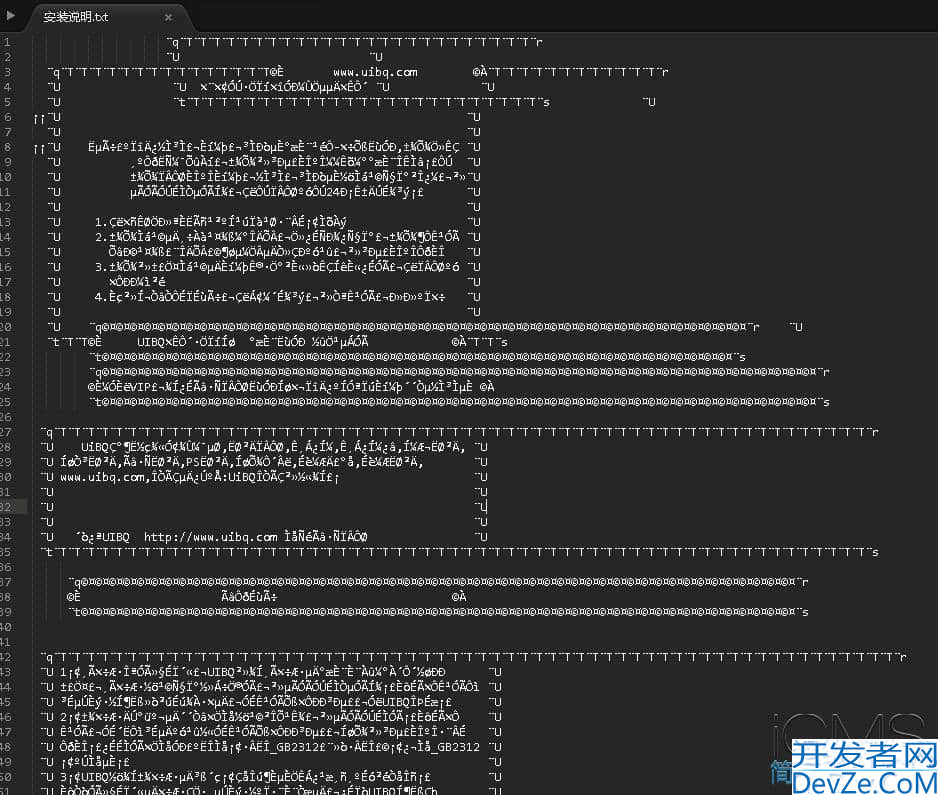pytorch中常用的乘法运算及相关的运算符(@和*)
目录
- 前言
- 1、torch.mm
- 2、torch.bmm
- 3、torch.mul
- 4、torch.mv
- 5、torch.matmul
- 6、@运算符
- 7、*运算符
- 附:二维矩阵乘法
- 总结
前言
这里总结一下pytorch常用的乘法运算以及相关的运算符(@、*)。
总结放前面:
torch.mm : 用于两个矩阵(不包括向量)的乘法。如维度为(l,m)和(m,n)相乘
torch.bmm : 用于带batch的三维向量的乘法。如维度为(b,l,m)和(b,m,n)相乘
torch.mul : 用于两个同维度矩阵的逐像素点相乘(点乘)。如维度为(l,m)和(l,m)相乘
torch.mv : 用于矩阵和向量之间的乘法(矩阵在前,向www.cppcns.com量在后)。如维度为(l,m)和(m)相乘,结果的维度为(l)。
torch.matmul : 用于两个张量(后两维满足矩阵乘法的维度)相乘或者是矩阵与向量间的乘法,因
编程客栈
为其具有广播机制(broadcasting,自动补充维度)。如维度为(b,l,m)和(b,m,n);(l,m)和(b,m,n);(b,c,l,m)和(b,c,m,n);(l,m)和(m)相乘等。【其作用包含torch.mm、torch.bmm和torch.mv】@运算符 : 其作用类似于torch.matmul。
*运算符 : 其作用类似于torch.mul。
1、torch.mm
import torch
a = torch.ones(1, 2)
print(a)
b = torch.ones(2, 3)
print(b)
output = torch.mm(a, b)
print(output)pPMOtsJvdQ
print(output.size())
"""
tensor([[1., 1.]])
tensor([[1., 1., 1.],
[1., 1., 1.]])
tensor([[2., 2., 2.]])
torch.Size([1, 3])
"""
2、torch.bmm
a = torch.randn(2, 1, 2)
print(a)
b = torch.randn(2, 2, 3)
print(b)
output = torch.bmm(a, b)
print(output)
print(output.size())
"""
tensor([[[-0.1187, 0.2110]],
[[ 0.7463, -0.6136]]])
tensor([[[-0.1186, 1.5565, 1.3662],
[ 1.0199, 2.4644, 1.1630]],
[[-1.9483, -1.6258, -0.4654],
[-0.1424, 1.3892, 0.7559]]])
tensor([[[ 0.2293, 0.3352, 0.0832]],
[[-1.3666, -2.0657, -0.8111]]])
torch.Size([2, 1, 3])
"""
3、torch.mul
a = torch.ones(2, 3) * 2
print(a)
b = torch.randn(2, 3)
print(b)
output = torch.mul(a, b)
print(output)
print(output.size())
"""
tensor([[2., 2., 2.],
[2., 2., 2.]])
tensor([[-0.1187, 0.2110, 0.7463],
[-0.6136, -0.1186, 1.5565]])
tensor([[-0.2375, 0.4220, 1.4925],
[-1.2271, -0.2371, 3.1130]])
torch.Size([2, 3])
"""
4、torch.mv
mat = torch.randn(3, 4)
print(mat)
vec = torch.randn(4)
print(vec)
output = torch.mv(mat, vec)
print(output)
print(output.size())
print(torch.mm(mat, vec.unsqueeze(1)).squeeze(1))
"""
tensor([[-0.1187, 0.2110, 0.7463, -0.6136],
[-0.1186, 1.5565, 1.3662, 1.0199],
[ 2.4644, 1.1630, -1.9483, -1.6258]])
tensor([-0.4654, -0.1424, 1.3892, 0.7559])
tensor([ 0.5982, 2.5024, -5.2481])
torch.Size([3])
tensor([ 0.5982, 2.5024, -5.2481])
"""
5、torch.matmul
# 其作用包含torch.mm、torch.bmm和torch.mv。其他类似,不一一举例。
a = torch.randn(2, 1, 2)
print(a)
b = torch.randn(2, 2, 3)
print(b)
output = torch.bmm(a, b)
print(output)
output1 = torch.matmul(a, b)
print(output1)
print(output1.size())
"""
tensor([[[-0.1187, 0.2110]],
[[ 0.7463, -0.6136]]])
tensor([[[-0.1186, 1.5565, 1.3662],
[ 1.0199, 2.4644, 1.1630]],
[[-1.9483, -1.6258, -0.4654],
[-0.1424, 1.3892, 0.7559]]])
tensor([[[ 0.2293, 0.3352, 0.0832]],
[[-1.3666, -2.0657, -0.8111]]])
tensor([[[ 0.2293, 0.3352, 0.0832]],
[[-1.3666, -2.0657, -0.8111]]])
torch.Size([2, 1, 3])
"""
# 维度为(b,l,m)和(b,m,n);(l,m)和(b,m,n);(b,c,l,m)和(编程客栈b,c,m,n);(l,m)和(m)等 a = torch.randn(2, 3, 4) b = torch.randn(2, 4, 5) print(torch.matmul(a, b).size()) a = torch.randn(3, 4) b = torch.randn(2, 4, 5) print(torch.matmul(a, b).size()) a = torch.randn(2, 3, 3, 4) b = torch.randn(2, 3, 4, 5) print(torch.matmul(a, b).size()) a = torch.randn(2, 3) b = torch.randn(3) print(torch.matmul(a, b).size()) """ torch.Size([2, 3, 5]) torch.Size([2, 3, 5]) torch.Size([2, 3, 3, 5]) torch.Size([2]) """
6、@运算符
# @运算符:其作用类似于torch.matmul a = torch.randn(2, 3, 4) b = torch.randn(2, 4, 5) print(torch.matmul(a, b).size()) print((a @ b).size()) a = torch.randn(3, 4) b = torch.randn(2, 4, 5) print(torch.matmul(a, b).size()) print((a @ b).size()) a = torch.randn(2, 3, 3, 4) b = torch.randn(2, 3, 4, 5) print(torch.matmul(a, b).size()) print((a @ b).size()) a = torch.randn(2, 3) b = torch.randn(3) print(torch.ma编程客栈tmul(a, b).size()) print((a @ b).size()) """ torch.Size([2, 3, 5]) torch.Size([2, 3, 5]) torch.Size([2, 3, 5]) torch.Size([2, 3, 5]) torch.Size([2, 3, 3, 5]) torch.Size([2, 3, 3, 5]) torch.Size([2]) torch.Size([2]) """
7、*运算符
# *运算符:其作用类似于torch.mul
a = torch.ones(2, 3) * 2
print(a)
b = torch.ones(2, 3) * 3
print(b)
output = torch.mul(a, b)
print(output)
print(output.size())
output1 = a * b
print(output1)
print(output1.size())
"""
tensor([[2., 2., 2.],
[2., 2., 2.]])
tensor([[3., 3., 3.],
[3., 3., 3.]])
tensor([[6., 6., 6.],
[6., 6., 6.]])
torch.Size([2, 3])
tensor([[6., 6., 6.],
[6., 6., 6.]])
torch.Size([2, 3])
"""
附:二维矩阵乘法
神经网络中包含大量的 2D 张量矩阵乘法运算,而使用 torch.matmul 函数比较复杂,因此 PyTorch 提供了更为简单方便的 torch.mm(input, other, out = None) 函数。下表是 torch.matmul 函数和 torch.mm 函数的简单对比。

torch.matmul 函数支持广播,主要指的是当参与矩阵乘积运算的两个张量中其中有一个是 1D 张量,torch.matmul 函数会将其广播成 2D 张量参与运算,最后将广播添加的维度删除作为最终 torch.matmul 函数的返回结果。torch.mm 函数不支持广播,相对应的输入的两个张量必须为 2D。
import torch input = torch.tensor([[1., 2.], [3., 4.]]) other = torch.tensor([[5., 6., 7.], [8., 9., 10.]]) result = torch.mm(input, other) print(result) # tensor([[21., 24., 27.], # [47., 54., 61.]])
总结
到此这篇关于pytorch中常用的乘法运算及相关的运算符(@和*)的文章就介绍到这了,更多相关pytorch常用乘法运算及运算符内容请搜索我们以前的文章或继续浏览下面的相关文章希望大家以后多多支持我们!





 加载中,请稍侯......
加载中,请稍侯......
精彩评论